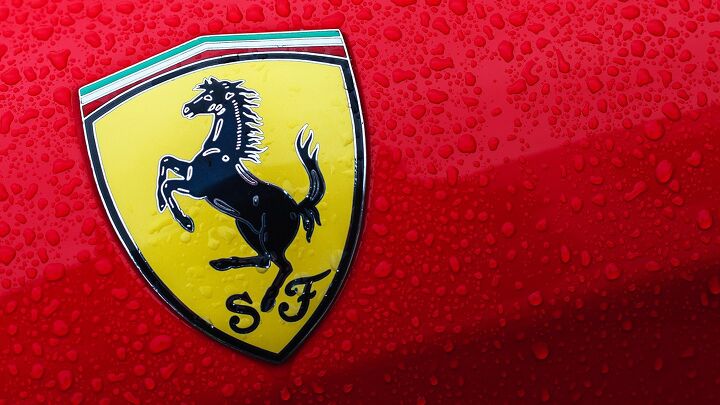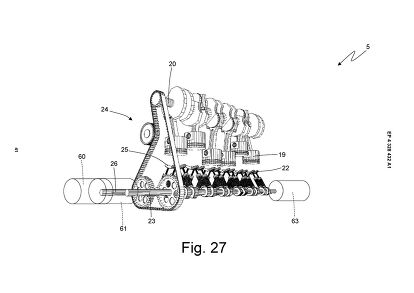Ferrari Patents Unholy Upside-Down Twin-Charged Hydrogen Inline-Six

“Hydrogen is for people who can’t build engines,” or something like that. It's tough to tell if Enzo might be in any way displeased with an inline-six, twin-turbo, and supercharged hydrogen engine. On the surface, the patent filings discovered by AutoGuide certainly sound like sacrilege coming from a brand that prides itself on its naturally aspirated V12. Yet the filings don’t lie, and Ferrari SPA has filed patents for exactly that.
If the filings are to be believed, the engine sounds massively complicated. For starters, the diagrams show that Ferrari’s traditional 6, 8, or 12-cylinder options have been left by the wayside for an inline-six. This is fed by a number of assists, and rests in the middle of the vehicle with a pair of hydrogen tanks on either side. First, there’s the supercharger, which is mated to two intercoolers. Then, there’s the turbos. However, near as we can tell, these don’t drive the engine in any way. Instead, the two turbos, which also feature some kind of electric motor on their turbines, feed an electric generator. The filings are too vague to be sure, but this could also be a sort of 48-volt hybrid system.
There are some familiar Ferrari hallmarks. For starters, the car is apparently only driven by its rear wheels, and the transmission hangs out behind the engine and between the rear wheels. But for every piece of the filings that make sense, there’s another that doesn’t. One diagram in the long list of filings shows the “internal combustion engine is oriented vertically with the drive shaft arranged higher than the cylinders.” In other words, freakin’ upside-down. Moreover, that specific diagram shows two cylinder banks, which throws out all the other diagrams with inline-six engines in them, and all others seem to show the I6 oriented on its head.
Frankly, it smacks of Ferrari smoke and mirrors. Is Modena really working on a hybrid, twin-chraged, I6 hydrogen car with an upside-down engine in it? Probably not. More than likely, the filings are there so that the brand has access to these various patents when it needs them. It makes sense to hold a patent for a supercharged engine, or a turbocharged one, or an inline-six just in case emissions regulations get real tight. But all at once? Not only does it sound like a maintenance nightmare even the most rigid of Ferrari collectors might scoff at, but it sounds downright improbable that Ferrari, a brand highly conscious of its “heritage” and image, would go for something so disruptive.
Become an AutoGuide insider. Get the latest from the automotive world first by subscribing to our newsletter here.

Chase is an automotive journalist with years of experience in the industry. He writes for outlets like Edmunds and AutoGuide, among many others. When not writing, Chase is in front of the camera over at The Overrun, his YouTube channel run alongside his friend and co-host Jobe Teehan. If he's not writing reviews of the latest in cars or producing industry coverage, Chase is at home in the driver's seat of his own (usually German) sports cars.
More by Chase Bierenkoven







































Comments
Join the conversation